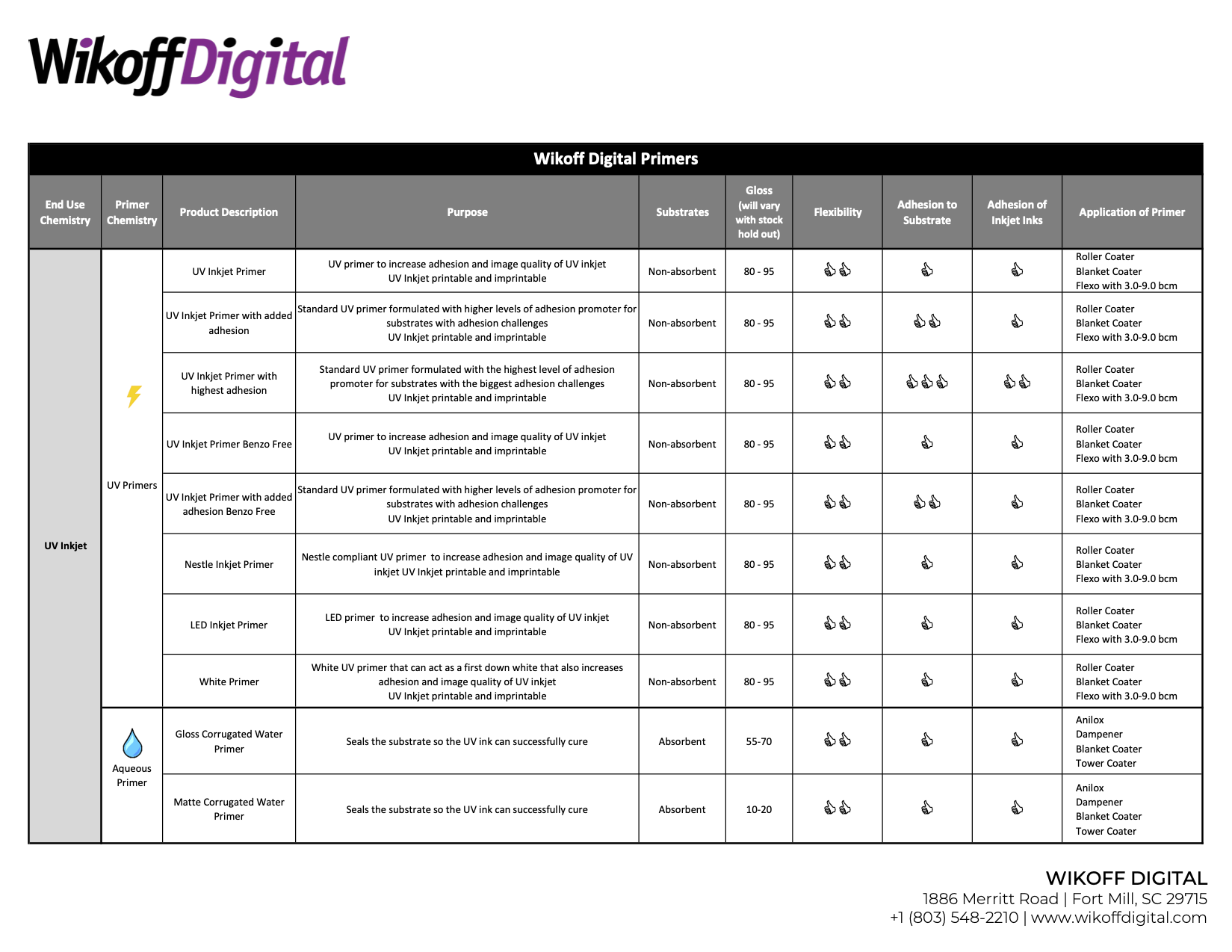Digital printing technology offers a world of benefits to any print shop. From the ease in delivering custom personalized jobs at a moment’s notice to the ability to perform short print runs quickly and cost-effectively, there are many jobs you can complete digitally in ways that just aren’t feasible with a traditional printing press.
But new opportunities brought about by digital printing come with unique challenges for printers and brand customers. With all the advancements in digital inks and transfer technologies, digital printers can still run into problems with certain substrates in terms of adhesion, color density, bleeding, resistance to scratching and scuffing, chemical protection, and over-printing. The solution is digital primers.
What is a digital primer?
The purpose of a digital primer is to provide a better surface for ink adhesion and drying. Primers achieve this aim in many ways, depending on the substrate and the challenges presented.
Perhaps the most common application is in the sealing of an absorbent substrate. When ink is applied to an absorbent substrate that has not been sealed, a number of unintended issues arise from the ink soaking into the substrate. A digital primer prevents this scenario by creating a new printing surface that is ideally formulated to work with a digital printing press.
Primers also even out rough or uneven surfaces by filling the spaces and creating a smooth, printable surface.
All primers are designed to enhance adhesion, therefore improving inkjet receptiveness.
Controlling how the ink interacts with your substrate
Losing control over dot gain is a major issue encountered by digital printers when attempting to print without the benefit of a primer. Jetted drops need to spread to the right size to deliver quality graphics. If the dot gain is too large, the image will appear blurry. If dot gain is insufficient, the image will appear weak, as if not enough ink was used.
Digital primers control dot size for crisper graphics and maximum color. Dot gain control also allows printers to reduce the amount of ink required to achieve desired color density, which can save money in the long run while enabling photo quality graphics.
Wikoff digital primers
Wikoff digital primers are specially formulated for high adhesion and better image quality. While all digital primers are designed for UV inkjet end-use chemistry, primer chemistry will vary depending on the substrate. UV primers are used for non-absorbent substrates whereas absorbent substrates require an aqueous primer for sealing.
UV primers are available in three primary categories:
- Standard adhesion – appropriate for increased adhesion and image quality for most substrates
- Extra adhesion – features higher levels of adhesion promoter for more challenging substrates
- Adhesion + compliance – formulated to adhere to benzo-free, low-migration, Prop 65 or Nestle compliance requirements
Aqueous primers include:
- UV inkjet for absorbent substrates – designed to seal porous substrates for UV inkjet applications
- Water-based inkjet on film – increase adhesion and enhance ink laydown for water-based inkjet applications on film
- Water-based inkjet – improve image quality and speed drying for water-based inkjet applications

Choosing the right digital primers
Wikoff Digital’s product line features primers for virtually any digital printing scenario and our technical team is ready to help you find the right products to solve the issues you’re facing with digital printing on challenging substrates.
